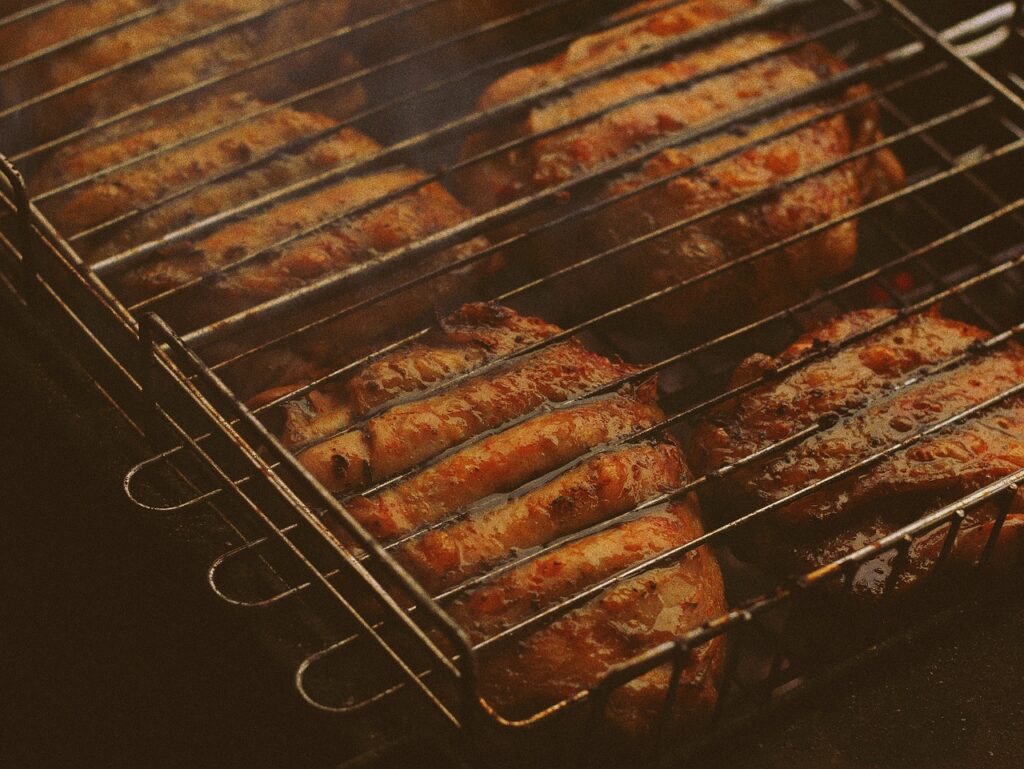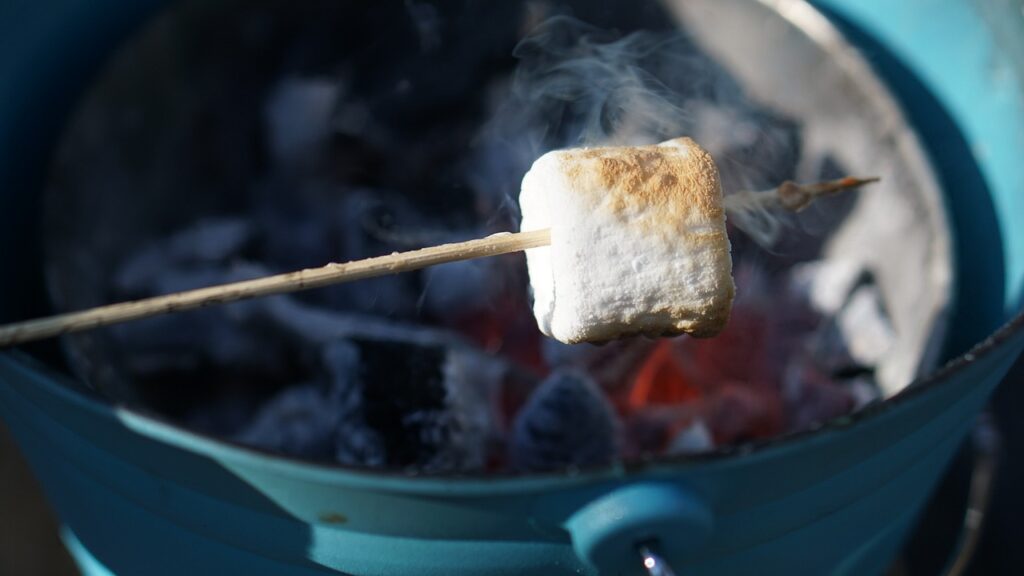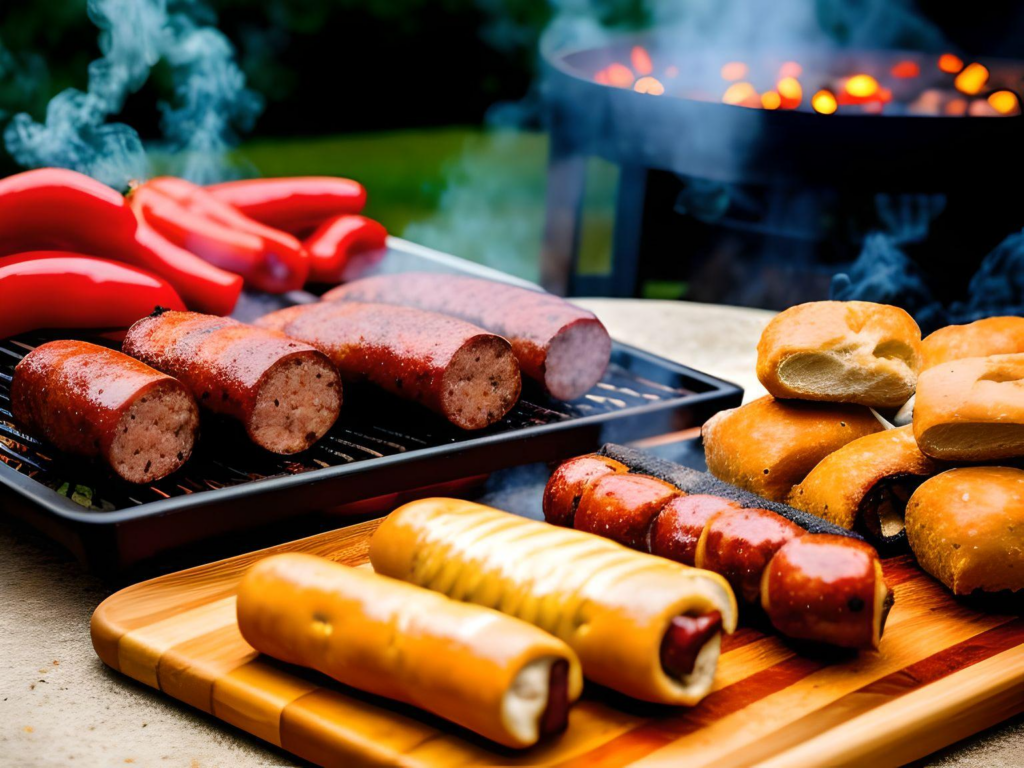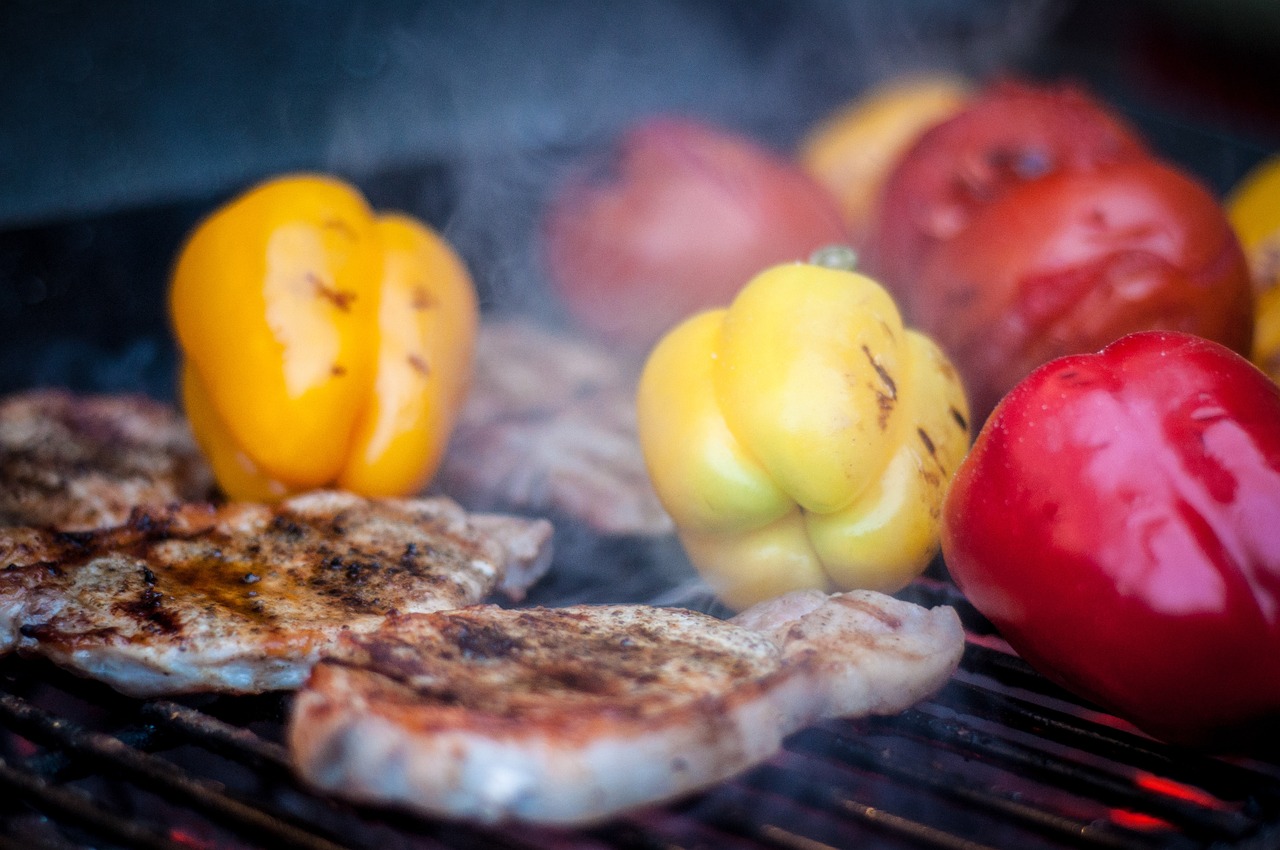From the familiar pastime’s origins to surprising tips and tactics, this list will provide you with all the tasty facts that you need to wow your friends at the next neighbourhood barbecue!
Uncover the Sizzle: The Ultimate Barbecue Knowledge for Outdoor Enthusiasts
As the warm spring breeze carries the aroma of grilling through the air, outdoor enthusiasts everywhere gear up for a season of smoky, succulent barbecues. But do you really know all there is to know about the art of barbecuing? From fascinating history to surprising facts, and from useful tips to the perfect brisket technique, this comprehensive guide will equip you with the intriguing insights you need to become the ultimate barbecue connoisseur and leave your friends in awe at your next neighborhood cookout.
1) From Pig-Pickin’s to Backyard Feasts: What is The Origin of Barbecues
Did you know that the concept of barbecues has its roots in pig-pickin’s, grand feasts that were a staple of Southern United States culture before the Civil War? Whole pigs were cooked and shared among crowds, becoming the centerpieces of gatherings filled with laughter and camaraderie.
2) The Ancient Art of “Smoking” for Preservation
Imagine barbecuing as far back as 6000 years ago! This ancient technique was not only about flavor but also about preserving meat. Long before refrigeration, smoking was employed to make meats safe to eat and store. By exposing meat to smoke and low heat, bacteria and enzymes were inhibited from growing, paving the way for delicious and safe consumption.

3) A Down Under Delight: The Australian “Barbie”
In Australia, the word “barbecue” takes on a whole new charm—it’s affectionately referred to as a “barbie.” The iconic catchphrase “I’ll slip an extra shrimp on the barbie for you,” made famous by Australian tourism ads, has become synonymous with the country’s vibrant culture and outdoor culinary traditions.
4) Boiling to Broiling? The True Nature of Barbecuing
The grilling technique we commonly associate with barbecues today isn’t quite what it seems. True barbecuing involves slow cooking at temperatures near the boiling point of water (180-220°F). This gentle approach ensures meat becomes tender while retaining its natural juices. In contrast, the method frequently used today—cooking at high temperatures of 475-700°F—is closer to broiling.
5) Marshmallows: The Unsung Stars of the Grill
What about the captivating history of the marshmallow, a treat that has seamlessly transitioned from a campfire staple to a grilling sensation? Did you know that the unassuming marshmallow, forever associated with campfire delights, has now taken center stage on the grill? Remarkably, as per the Barbecue Industry Association, a staggering half of all marshmallows devoured in the U.S. meet their toasty fate over the open flames of a barbecue grill.

Beyond the expected, there’s an enchanting revelation in store – marshmallows. These soft, cloud-like confections, renowned for campfire s’mores, have evolved into the unsung champions of the grill too. With a mere infusion of heat, marshmallows undergo a magical transformation, turning into gooey, glistening treasures that infuse nostalgia and sweetness into any barbecue gathering. Whether you’re indulging in timeless s’mores or embracing inventive marshmallow creations, these treats will undoubtedly take your grilling experience to an entirely new realm of scrumptious pleasure.
6) How Can You Tell How Much Propane is Left in your Tank?
Weighing Propane: A Clever Gauge for Grilling
Running out of propane during a barbecue can be a buzzkill, but fear not! To determine the amount of propane left in a propane tank using the weighing method, follow these steps:
- Remove Attachments: Disconnect any attachments such as grills or regulators from the propane tank to get an accurate weight.
- Obtain Empty Weight: Locate the “tare weight” or “empty weight” stamped on the collar or handle of the propane tank. This weight indicates how much the tank itself weighs when it’s empty.
- Weigh the Tank: Using a bathroom scale or a specialized propane tank scale, carefully weigh the propane tank. Make sure the tank is placed securely on the scale and the scale is on a flat surface.
- Subtract Empty Weight: Subtract the empty weight (tare weight) of the tank from the total weight obtained in step 3. The result will give you the weight of the propane left in the tank.
- Convert to Gallons: Propane has a specific gravity of about 1.53, which means it’s 1.53 times heavier than air. To convert the weight of propane to gallons, divide the weight by 4.2 (the number of pounds in a gallon of propane). This will give you an estimate of the remaining gallons of propane in the tank.
Keep in mind that this method provides a rough estimate and might not be entirely accurate due to factors like temperature and pressure affecting the weight of propane. If you rely heavily on propane for grilling or other purposes, it’s advisable to have a backup tank or consider getting a propane tank gauge, which provides a more precise indication of the propane level.
7) Tracing the Origins of “Barbecue”
The word “barbecue” holds a mysterious history. Some believe it evolved from the American-Indian term “barbacoa,” referencing the wooden frame on which food was cooked. Others speculate it has French roots, originating from “de barbe à queue,” meaning “whiskers to tail.” Regardless of its origins, the word carries the essence of a timeless culinary tradition.
8) The Smoky Secret: Introducing “Liquid Smoke”
Yearning for that signature smoky flavor in your gas-grill-cooked dishes? Look no further than “liquid smoke.” This intriguing product is condensed actual smoke and can effortlessly infuse your marinades and sauces with that rich, smoky profile, whether you’re grilling outside or cooking indoors.
Liquid smoke is a versatile flavoring agent that infuses a smoky essence to foods, it replictaes the taste of traditional smokehouse cooking. It’s created by condensing actual smoke from wood chips or sawdust into a liquid form. This condensed smoke is then filtered to remove impurities, resulting in a concentrated liquid with a strong smoky aroma and flavor.
Liquid smoke is commonly used to add a smoky element to dishes. It’s a convenient way to infuse that classic barbecue taste into a variety of foods, from meats and sauces to soups and marinades. Just a small amount of liquid smoke can elevate the flavor profile of your dishes, creating a depth and richness reminiscent of slow-smoked preparations. Whether you’re cooking indoors or simply looking to enhance your culinary creations, liquid smoke is a perfect accompaniment.
9) How long do you need to cook a Brisket?
Mastering Brisket: A Patient Pursuit
Brisket, the enigmatic cut hailing from a cow’s chest, beckons us to a realm of patience and perfection. How much time is needed to cook a brisket? Brace yourself, for this pursuit requires time to unfold. Allocating one to two hours on the grill per pound of brisket means dedicating a colossal 12 hours to cook an 8lb brisket. The reward? A tender, tantalizing masterpiece that transcends time itself.
Preparation: Before cooking, make sure to season your brisket with your preferred rub or marinade. Allow the seasoned brisket to rest at room temperature for about 30 minutes before cooking.
- Temperature: Maintain a consistent cooking temperature in the indirect heat zone. The ideal temperature for cooking brisket is around 225-250°F (107-121°C).
- Use a Meat Thermometer: The most accurate way to determine when your brisket is done is by using a meat thermometer. Insert the thermometer into the thickest part of the brisket without touching the bone. For a tender brisket, aim for an internal temperature of around 195-203°F (90-95°C).
- The Stall: Be prepared for a phenomenon called “the stall.” During cooking, the internal temperature of the brisket might plateau or even drop slightly. This is normal and happens due to moisture evaporating from the meat. It can last for a few hours. Be patient, as the temperature will eventually rise again.
- Resting: Once the brisket reaches your desired internal temperature, remove it from the grill and let it rest for about 30-60 minutes. This allows the juices to redistribute within the meat, resulting in a more tender and flavorful final product.
Remember, the cooking time can vary based on the specific characteristics of your grill, the brisket’s thickness, and the conditions on the cooking day. It’s always better to start cooking earlier than needed, as brisket can be held in a cooler wrapped in towels for several hours without losing much heat. This will give you some flexibility in case the cooking process takes longer than expected.
Lastly, consider the use of wood chips or chunks for smoking flavor, and always monitor the grill temperature to ensure it remains within the desired range throughout the cooking process.
10) What State is the BBQ Capital?
The debate over barbecue capitals is as heated as the grill itself. Kansas City, Missouri and Lexington, North Carolina, both lay claim to being barbecue meccas, while Memphis proudly asserts its status as the pork barbecue capital.
When it comes to sizzling flavors, mouthwatering aromas, and a culture deeply rooted in barbecuing traditions, Texas also proudly claims the title of the BBQ capital. This Lone Star state has earned its reputation for serving up some of the most iconic and diverse barbecue styles, from slow-cooked brisket to juicy ribs and tantalizing sausages. Whether you’re a fan of sweet, smoky, or spicy, Texas has a BBQ scene that will leave you craving more. These BBQ havens hold a unique place in the hearts of grill enthusiasts worldwide.
Ignite Your Passion for Barbecue
From its captivating history to its funny anecdotes, and from essential tips to incredible brisket know-how, your barbecue game is about to reach new heights. Armed with these insights, you’re not just ready to impress; you’re set to become the go-to grill guru among your friends. So fire up that smoker, preheat the grill, and embark on a journey of flavors and stories that define the essence of barbecuing!
After reading this article, you are not equipped to decide which type of BBQ is best – read more here!


